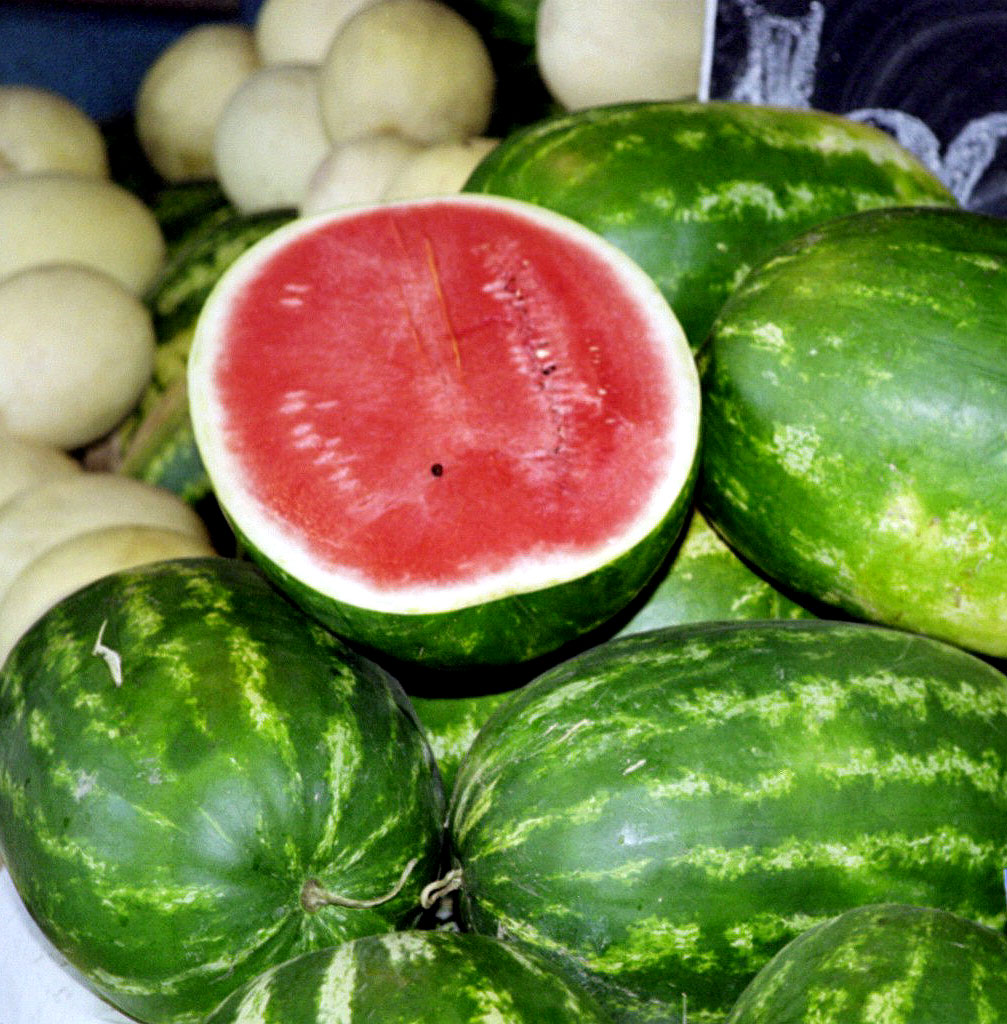 Watermelon
One of the largest of the melons.
Watermelon
One of the largest of the melons.
Popular in warm climates and hot weather, for its cool
juiciness, it is often chilled and eaten out of the hand. It is
popular when in season in fruit salads and deserts alike. The
shell is often carved and used as a centerpiece or the rind can be pickled
and used as a condiment or relish.
In other parts of the world watermelon is enjoyed in
different ways. In southern Russia a bear is made from watermelon
juice, or the juice may be boiled down to a heavy syrup like molasses for
its sugar. In Iraq, Egypt, and Africa, the flesh of the melon is
used as a staple food and animal feed, as well as a source of water in
some dry districts. In Asia the seeds are roasted salted or not and eaten
out of the hand. In some Asian countries the watermelon is preserved
by salting or brining large pieces or halves in barrels.
Storage Watermelons are not adapted
to long storage periods. At low temperatures 32 to 50 degrees, they
are subject to chilling injury. At 32 degrees they tend to become
pitted and the flavor becomes objectionable after a week. At 50
degrees or lower they will lose color. At higher temperatures
the melons are subject to decay. Holding Watermelons for short
periods at room temperature can improve flavor and color.
Complimenting Flavors and Condiments
Coconut Cream, Lime, Salt, Citrus Fruits, Pineapple, Ginger























